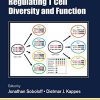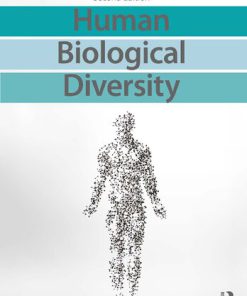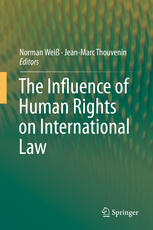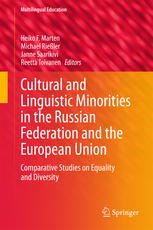The Diversity of Russian Estuaries and Lagoons Exposed to Human Influence 1st Edition by Ruben Kosyan 3319433905 9783319433905
$50.00 Original price was: $50.00.$25.00Current price is: $25.00.
The Diversity of Russian Estuaries and Lagoons Exposed to Human Influence 1st Edition by Ruben Kosyan – Ebook PDF Instant Download/Delivery: 3319433905, 9783319433905
Full download The Diversity of Russian Estuaries and Lagoons Exposed to Human Influence 1st Edition after payment
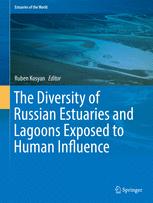
Product details:
ISBN 10: 3319433905
ISBN 13: 9783319433905
Author: Ruben Kosyan
This volume describes the complex characteristics of almost all Russian coastal estuaries systematized in the following regions: the coasts of the White Sea, the Barents Sea, the Kara Sea, the Laptev Sea, the East Siberian Sea, the Chukchi Sea, the Black Sea, the Sea of Azov, the Baltic Sea, the Sea of Okhotsk, the Sea of Japan and the Bering Seas. The part on the Baltic Sea includes a detailed description of the Kaliningrad coast and the Gulf of Finland. Apart from the geology and morphology, this book also looks at the anthropogenic effects on shores as well as at hydrological conditions, local climate and water level characteristics, and at economic use of lagoons.
The Diversity of Russian Estuaries and Lagoons Exposed to Human Influence 1st table of contents:
1: Specific Features of Estuaries, Lagoons, Limans: Concepts and Terms
1.1 Introduction
1.2 Definitions
1.3 Classification
1.4 Evolution of Lagoons
References
2: Estuaries and Lagoons of the Russian Arctic Seas
2.1 Introduction
2.2 Peculiarities of the Lagoon Coasts of the Russian Arctic Seas
2.3 Estuaries of the Russian Arctic Seas
2.4 Lagoon Coasts and Estuaries of the Russian Arctic Seas
2.4.1 The Barents Sea
2.4.2 The Kara Sea
2.4.3 The Laptev Sea
2.4.4 The East Siberian Sea
2.4.5 The Chukchi Sea
2.5 Conclusion
References
3: Estuaries, Lagoons, and Limans of the Marginal Seas of Northeast Asia
3.1 Introduction
3.2 Morphology and Dynamics of the Shores of Northeast Asia
3.2.1 The Bering Sea
3.2.2 The Sea of Okhotsk
3.2.3 The Sea of Japan
3.2.4 Lagoons and Estuaries of the Northeast Asia Seas
3.3 Lagoons of Sakhalin Island
3.3.1 Geomorphological Structure of the Coast and the Conditions of Lagoon Formation
3.3.1.1 Hydrodynamics of the Coastal Waters
3.3.1.2 Geological and Geomorphological Structure of the Coast
3.3.1.3 Morphology and Dynamics of Shores
3.3.1.4 Anthropogenic Effect on the Shores and Shelf
3.3.1.5 Geomorphological Monitoring and Economic Use of Lagoons
3.3.2 Nabil Lagoon
3.3.3 Busse Lagoon
3.3.4 Tunaycha Lagoon
3.4 Deltaic Estuarine System of the Amur River
3.4.1 Overview
3.4.2 Hydrological Conditions
3.4.3 Geomorphology and History of Delta Formation
3.4.4 Economic Activity
3.5 Conclusion
References
4: Lagoons of the Black Sea
4.1 Introduction
4.2 Lagoons of the Imeretinskaya Lowland
4.3 The Black Sea Lagoons of the Kuban River Delta
4.3.1 The Economic Importance of Fishing to the Black Sea Lagoons of the Kuban River Delta
4.3.2 The Modern and Future Economic Use of the Black Sea Lagoons of the Kuban River Delta
4.4 Sudzhuk Lagoon
4.5 Small Lagoons
4.6 Conclusion
References
5: Lagoons of the Smallest Russian Sea
5.1 Introduction
5.2 Azov-Kuban Limans
5.2.1 Akhtarsky Liman
5.2.2 The Kurchansky Liman
5.2.3 The Akhtanizovsky Liman
5.3 The Beisugsky Liman and Lake Khanskoye
5.4 The Yeisk Liman
5.5 The Lagoons of the Kerch Strait
5.6 Small Lagoons of the Sea of Azov
5.7 Conclusion
References
6: Transboundary Lagoons of the Baltic Sea
6.1 Introduction
6.2 Drainage Basin of the Vistula Lagoon-Pregolya River-Curonian Lagoon System
6.3 Environmental Conditions of the Curonian and Vistula Lagoons
6.3.1 The Curonian Lagoon
6.3.2 The Vistula Lagoon
6.4 Local Climate and Water Level Characteristics for the Vistula and Curonian Lagoons
6.5 Trends in Water Surface Temperature in the Vistula and Curonian Lagoons
6.5.1 The Vistula Lagoon
6.5.2 The Curonian Lagoon
6.5.3 Final Remarks
6.6 Spatial and Seasonal Variations of Salinity in the Vistula Lagoon, Including the Navigabl
6.7 Bottom Sediments in the Vistula Lagoon
6.8 Shore Line of the Russian Part of the Vistula Lagoon
6.9 Economic Activities and Use of the Russian Part of the Vistula Lagoon
6.9.1 Fishery
6.9.2 Aquaculture
6.9.3 Waste Water Discharge
6.9.4 Tourism
6.9.5 Dredging and Dumping
6.9.6 Navigation
6.10 Population, Water Use, Land-Use and Economic Activities in the Vistula Lagoon Catchment
6.11 The Basis for Spatial Planning of the Curonian and Vistula Lagoons
6.12 Expected Changes in Use of the Vistula Lagoon and Catchment Due to Climate Change
6.12.1 Agriculture and Food Industry
6.12.2 Port and Land Transport
6.12.3 Tourism and Recreation
6.12.4 Fishery
6.12.5 Industrial Production
6.12.6 Environmental Protection
6.13 Conclusion
References
7: Neva Bay: A Technogenic Lagoon of the Eastern Gulf of Finland (Baltic Sea)
7.1 Introduction
7.2 Physical Conditions of Neva Bay
7.2.1 Physical Geography and Hydrology of Neva Bay
7.2.2 History of the Neva Bay Bottom and Coastal Studies
7.3 Regional Geology, Geomorphology and Geological History
7.3.1 Late- and Postglacial Geological History of the Eastern Gulf of Finland
7.4 Bottom Sediments of Neva Bay and Recent Sedimentation Processes
7.5 Biological Characteristic of Neva Bay and Its Coast
7.5.1 Phytoplankton
7.5.2 Macrophytobenthos
7.5.3 Zooplankton
7.5.4 Macrozoobenthos
7.5.5 Fish, Fish Spawning and Nursery Habitats
7.5.6 Terrestrial Vertebrates in Coastal Habitats
7.6 Anthropogenic Impact on Neva Bay. Vulnerability Assessment of Lagoons to External Factors of
7.6.1 Anthropogenic Impact on Bottom Relief
7.6.2 Anthropogenic Impact on the Coastal Zone
7.6.3 Anthropogenic Impact on Sedimentation Processes
7.7 Characteristics of Anthropogenic Impact Assumed in Future Prospects
7.8 Vulnerability Assessment of the Neva Bay Environment to External Factors of Natural and Te
7.9 Discussion
7.10 Conclusion
References
8: The White Sea as an Estuarine System
8.1 Introduction
8.2 Main Factors Governing the Regime of the White Sea
8.2.1 Morphometric Characteristics of the White Sea
8.2.2 Climatic and Meteorological Characteristics of the White Sea
8.2.3 Freshwater Contributors
8.2.4 Tides and Tidal Energy
8.3 Systematic Approach to the Hydrology of the White Sea
8.4 The Morphology of the Coastal Zone of the White Sea
8.5 The Landscape and Geomorphological Characteristics of the White Sea Coast
8.6 Biological Characteristics of the White Sea Coast
8.7 Lagoons of the White Sea
8.7.1 Lake Kislo-Sladkoe (Sweet and Sour Lake)
8.7.2 Ermolinskaya Guba (Inlet Bay)
8.7.3 Kislaya Guba (Sour Inlet Bay)
8.8 Estuaries of the White Sea
8.8.1 Severnaya Dvina
8.8.2 Onega River
8.8.3 The Mezen and Kuloy Rivers
8.9 The Main Morphological and Lithodynamic Processes in the Coastal Zone
8.9.1 Hydrodynamic Conditions
8.9.2 Distribution and Differentiation of Sedimentary Material
8.9.3 Southern Coast of the Kol’skiy Peninsula
8.9.4 Peculiarities of the Coast Evolution Under Conditions of the Tectonic Uplift
8.9.5 Possible Changes to the Coast in Relation to Projected Global Climate Change
8.10 Unique Natural Objects of the White Sea
8.11 Natural Protected Areas
8.12 Red Data Book of the White Sea
8.13 Modern Anthropogenic Impact
8.14 Recommendations for the Prospective Economic Development of Unique Coastal Landscapes with
References
9: The Diversity of Russian Estuaries
9.1 Introduction
9.2 Positioning of Considered Estuaries, Lagoons and Limans
9.3 General Characteristics of Estuaries, Lagoons and Limans
9.4 Morphodynamical Characteristics of the Coast
9.5 Brief Description of the Adjacent Coast
9.6 Biological Characteristics of Estuaries, Lagoons, and Limans
9.7 Characteristics of Existing Exposure
9.8 Promising Directions
9.9 Assessment of Lagoons’ Vulnerability to External Factors of Natural and Antropogenic Char
9.10 Conclusion
People also search for The Diversity of Russian Estuaries and Lagoons Exposed to Human Influence 1st:
describe the diversity and productivity of estuaries
the diversity of species seen on the galapagos islands
the diversity of species on earth is the result of
an estuary within a lagoon
what is the distinctive feature of an estuary
Tags: The Diversity, Russian Estuarie, Lagoons Exposed, Human Influence, Ruben Kosyan
You may also like…
Uncategorized
How to Steal Fire The Myths of Creativity Exposed The Truths of Creativity Explained Stephen Bayley
Relationships & Lifestyle - Relationships
Business & Economics
History - World History
Children of Lucifer: The Origins of Modern Religious Satanism 1st Edition Ruben Van Luijk
Jurisprudence & Law Society
The Influence of Human Rights on International Law 1st Edition Norman Weiß
Physics - Relativity
An Introduction to Geometrical Physics 2nd Edition by Ruben Aldrovandi 9813146839 9789813146839
Education Studies & Teaching Linguistics


